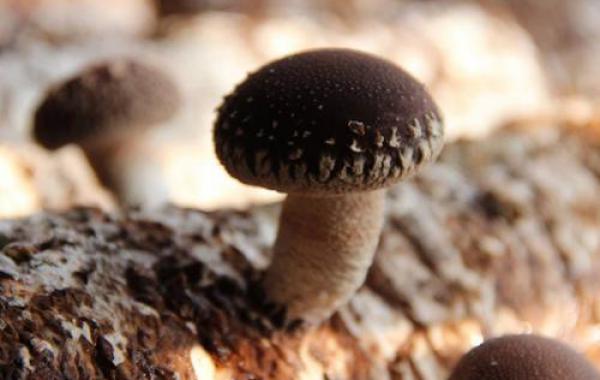What are the methods for the prevention and control of diseases and insect pests of edible fungi?

What are the ways to prevent and control diseases and insect pests of edible fungi.
Edible fungus is a kind of organic, nutritious and healthy green food. The development of edible mushroom industry meets the needs of the growth of people's consumption and the sustainable development of agriculture, and is an effective way for farmers to get rich quickly. In the process of early matching of edible fungi, the prevention and control of diseases and insect pests is very important.
Make use of the habits of pests to control metallurgy
1. Artificial capture of bacteria and mosquitoes.
2. Put the bag of gall mosquitoes in the sun for 1-2 hours or sprinkle with lime powder.
Water immersion prevention and control
Bottle planting and bag planting can inject water into bottles and bags, block planting can soak the cultivation block into water and press heavy objects, soaking for 2-3 hours. After soaking, the bottles and bags are drained and put back in place.
Trap and kill
1. Trap and kill mosquitoes and moths with black light or energy-saving lamps. The method is to put 0.1% dichlorvos in the basin under the lamp, and the pest will be killed when it falls into the basin.
2. The armyworm board smeared with 40% polypropylene can be placed in the strong light.
Prevention and treatment of Aspergillus
1. Remove the waste in time.
2. When filling the bottle, it should not be connected with the bottle. After bottling, wash the mouth of the bottle to remove sundries and keep the tampon clean.
3. Apply 5 mg / L carbendazim, but it must be applied after mushroom harvest.
Prevention and control of green mold
1. Reduce the temperature and humidity of the mushroom room, increase the ventilation rate, and cover the moldy place with plant ash to prevent the mold spores from flying.
2. Take 9 parts of quicklime and 1 part of carbendazim, mix well with proper amount of water, and brush the mold.
3. During the cultivation of raw materials, 100 grams of chlorpromazine is added to every 100 kg of dry material, which can completely prevent the growth of mold.
4. Sprinkle potassium permanganate particles on the mold and spray water on its periphery.
5. Soak the mold in 5% limewater. After the mold disappears, remove the limewater and add new materials.
6. Smear 95% alcohol or hot oil on the mold, ignite it and burn it, then dig it out to fill the new material.
Prevention and control of bacteria
1. The culture medium should be sterilized thoroughly, and the temperature, pressure and time should meet the requirements during sterilization.
2. After the culture medium is ready, put it in the incubator of 30 ℃ for one day and then use it again to ensure that there is no bacterial infection.
3. Antibiotics can be added to the culture medium, which is generally 100-200 units per milliliter.
With the change of people's living habits, the domestic market has great potential, and China is a big exporter of edible fungi. If each person in China eats 2 jin of edible mushrooms every year, the sales income can be increased by more than 8 billion yuan. From this, we can see that the mushroom market will be a very big market.
In cultivation, due to improper cultivation and management techniques and suitable environmental conditions or genetic variation and other reasons, the growth and development of edible fungi have physiological obstacles, resulting in abnormalities and even death, which are listed as physiological diseases.
1. Mycelia grow excessively
This phenomenon occurs in the cultivation of Lentinus edodes and Pleurotus ostreatus. Overgrown hyphae grow too much on the covered soil surface or culture material surface, forming a dense impervious quilt, resulting in delayed or sparse mushroom production.
(1) cause of occurrence
① management reasons in the cultivation of Pleurotus ostreatus, do not pay attention to ventilation, covered with plastic film did not open ventilation, carbon dioxide accumulation is too much; Lentinus edodes culture material surface humidity is too large; Pleurotus ostreatus culture materials are dry, these adverse environmental conditions are suitable for mycelium growth, not conducive to the formation of fruiting body, resulting in overgrowth.
When the mother species of ② strain is separated, the aerial hyphae are picked too much, which often causes caking phenomenon between the original species and cultivated species, and the hyphae grow too much.
(2) Prevention and control methods
In the later stage of mycelium growth, attention should be paid to the ventilation of the mushroom room, the plastic film should be often lifted to increase the air permeability, and the concentration of carbon dioxide should be reduced appropriately; the humidity of the culture material should be properly allocated to prevent excessive dryness or humidity; and the temperature in the mushroom room should be properly reduced. In short, in cultivation, scientific and correct management should be strengthened to avoid the environmental conditions of mycelium overgrowth and promote the formation of fruiting bodies.
If the mycelium has grown excessively and the bacterial bundle net or quilt appears on the surface of the culture material, you can cut the bacterial quilt or bacterial bundle net with a knife, spray heavy water, and carry out large ventilation, lower temperature and create temperature difference stimulation, which can promote the formation of fruiting body.
2. Deformed mushroom
In the cultivation of edible fungi, the irregular shape of fruiting body often occurs, which is called abnormal mushroom, such as Pleurotus ostreatus, Lentinus edodes and so on.
(1) cause of occurrence
There are many causes of abnormal mushrooms, such as mechanical damage, poor air circulation in the mushroom room, high concentration of carbon dioxide, insufficient light in the mushroom bed, high temperature, virus damage, improper use of drugs due to disease, or the role of physical and chemical mutagens, as well as genetic variation and other reasons, can cause the occurrence of deformed mushrooms.
(2) Prevention and control methods
The main measures to prevent the occurrence of abnormal mushrooms are symptomatic treatment, such as strengthening ventilation in mushroom rooms, giving appropriate light and temperature conditions, rational use of pesticides, proper use of mutagens, selection of excellent varieties and so on.
Related
- Fuxing push coffee new agricultural production and marketing class: lack of small-scale processing plants
- Jujube rice field leisure farm deep ploughing Yilan for five years to create a space for organic food and play
- Nongyu Farm-A trial of organic papaya for brave women with advanced technology
- Four points for attention in the prevention and control of diseases and insect pests of edible fungi
- How to add nutrient solution to Edible Fungi
- Is there any good way to control edible fungus mites?
- Open Inoculation Technology of Edible Fungi
- Is there any clever way to use fertilizer for edible fungus in winter?
- What agents are used to kill the pathogens of edible fungi in the mushroom shed?
- Rapid drying of Edible Fungi



